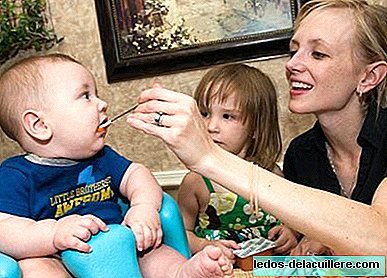
The virus of rotavirus It is to blame for most episodes of severe diarrhea in infants and children. It produces relatively severe gastroenteritis that, because of the risk of dehydration, children must be admitted to the hospital to be hydrated by serum. Is guilty About 450,000 annual deaths of children under 5, being the majority in poor countries, for not having the same means as us.
Many of the parents know him for the existence of the optional vaccine, which is administered orally to infants under 6 months. Well, now a group of researchers wanted to put their grain of sand in the fight against the virus and They have created a variant of rice that protects who eats it from rotavirus.
Rice has been created at the University of Tokyo, in Japan, and as they explain it has the particularity of producing a specific rotavirus antibody. The authors have published an article talking about him in the magazine Journal of Clinical Investigation.
To know the effect of their transgenic rice, they experimented with immunosuppressed mice and others without immune problems and saw that they all acquired protection against the virus. The good thing about this is that rice would protect immunocompromised children, who are much more likely to die from a rotavirus infection and whose response to the vaccine is usually quite poor.
In addition, rice can also be used as a treatment Once a child or a person has acquired the disease, if we consider that rice is the most recommended astringent food when someone has diarrhea, it becomes the ideal food.
The researchers also explain in the article that the effectiveness of rice is maintained even after being stored for more than a year and that there is also no loss of properties when boiled.
Now they need to present effectiveness data when consumed by humans in what seems like a great strategy to reduce mortality and morbidity of rotavirus at low cost, being probably better than the vaccine for children from poor countries, where it has a more limited effectiveness than in the first world and where many children cannot even access it because it can be administered only to children under six months, three doses being also necessary before that moment.
Hopefully it can soon be used and marketed, and it really is at low cost, for all children in those countries and, why not, for those in the rest of the world.












